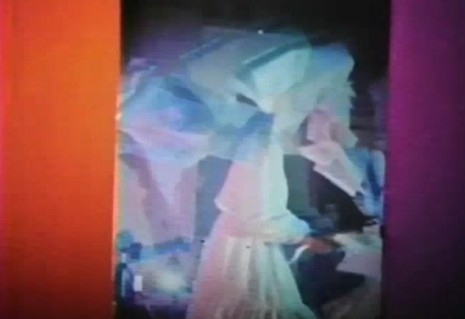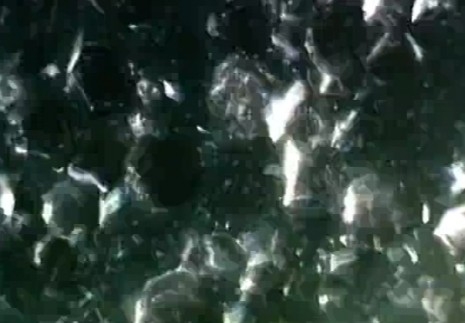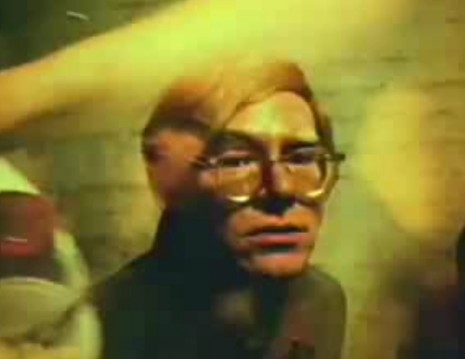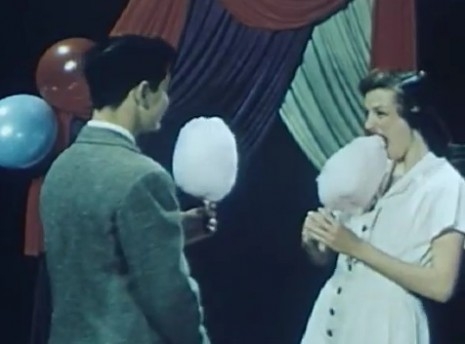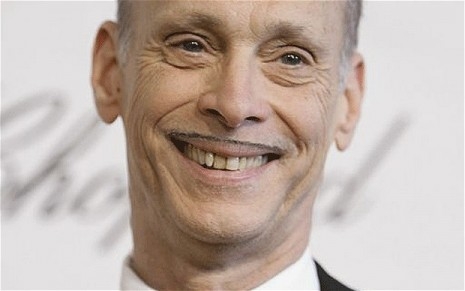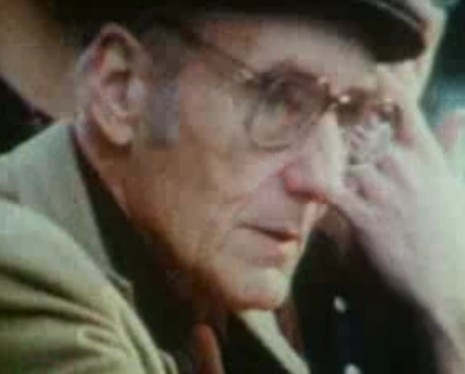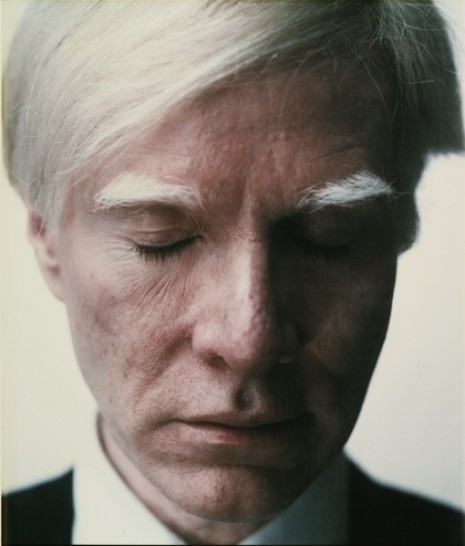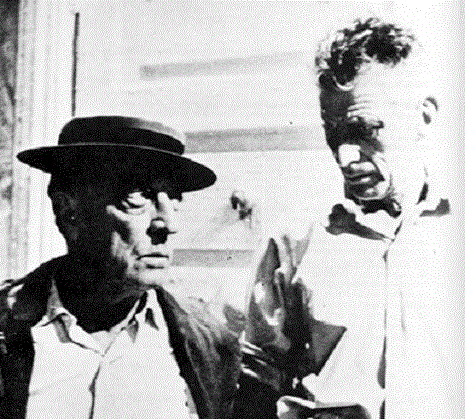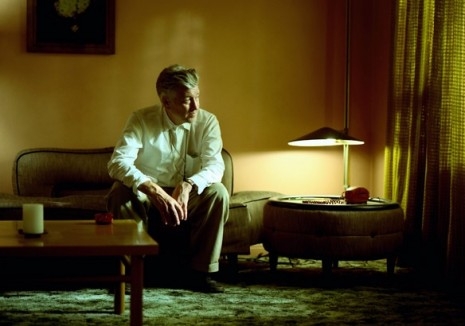
I find it difficult to watch Adam Curtis‘s various acclaimed documentaries without thinking: how much has he taken from Bruce Conner?
Indeed without Conner, would Curtis have developed his magpie, collagist-style of documentary making?
I doubt it, but you (and Curtis) may disagree.
The late Bruce Conner is the real talent here - an artist and film-maker whose work devised new ways of working and presciently anticipated techniques which are now ubiquitously found on the web, television and film-making.
Conner was “a heroic oppositional artist, whose career went against the staid and artificially created stasis of the art world”. Which is academic poohbah for saying Conner kept to his own vision: a Beat life, which channeled his energies into art - with a hint of Dada, Surrealism and Duchamp.
Conner was cantankerous and one-of-a-kind. He would wear an American flag pin. When asked why, he said, “I’m not going to let those bastards take it away from me.”
He kicked against fame and celebrity, seeing art as something separate from individual who created it.
“I’ve always been uneasy about being identified with the art I’ve made. Art takes on a power all its own and it’s frightening to have things floating around the world with my name on them that people are free to interpret and use however they choose.”
Born in McPherson, Kansas, Conner attended Witchita University, before receiving his degree in Fine Art from Nebraska University. At university he met and married Jean Sandstedt in 1957. He won a scholarship to art school in Brooklyn, but quickly moved to University of Colorado, where he spent one semester studying art. The couple then moved to San Francisco and became part of the Beat scene. Here Conner began to produce sculptures and ready-mades that critiqued the consumerist society of late 1950’s. His work anticipated Pop Art, but Conner never focussed solely on one discipline, refusing to be pigeon-holed, and quickly moved on to to film-making.
Having been advised to make films by Stan Brakhage, Conner made A MOVIE in 1958, by editing together found footage from newsreels- B-movies, porn reels and short films. This single film changed the whole language of cinema and underground film-making with its collagist technique and editing.
The Conners moved to Mexico (“it was cheap”), where he discovered magic mushrooms and formed a life-long friendship with a still to be turned-on, Timothy Leary. When the money ran out, they returned to San Francisco and the life of film-maker and artist.
In 1961, Conner made COSMIC RAY, a 4-minute film of 2,000 images (A-bombs, Mickey Mouse, nudes, fireworks) to Ray Charles’ song “What I Say”. With a grant from the Ford Foundation, Conner produced a series of films that were “precursors, for better or worse, of the pop video and MTV,” as his obituary reported:
EASTER MORNING RAGA (1966) was designed to be run forward or backward at any speed, or even in a loop to a background of sitar music. Breakaway (1966) showed a dancer, Antonia Christina Basilotta, in rapid rhythmic montage. REPORT (1967) dwells on the assassination of John F Kennedy. The found footage exists of repetitions, jump cuts and broken images of the motorcade, and disintegrates at the crucial moment while we hear a frenzied television commentator saying that “something has happened”. The fatal gun shots are intercut with other shots: TV commercials, clips from James Whale’s Frankenstein and Lewis Milestone’s All Quiet on the Western Front. The film has both a kinetic and emotional effect.
REPORT revealed “Kennedy as a commercial product”, to be sold and re-packaged for arbitrary political purposes.
REPORT “perfectly captures Conner’s anger over the commercialization of Kennedy’s death” while also examining the media’s mythic construction of JFK and Jackie — a hunger for images that “guaranteed that they would be transformed into idols, myths, Gods.”
Conner’s work is almost a visual counterpart to J G Ballard’s writing, using the same cultural references that inspired Ballard’s books - Kennedy, Monroe, the atom bomb. His film CROSSROADS presented the 1952 atomic bomb test at Bikini Atoll in extreme slow motion from twenty-seven different angles.
His editing techniques influenced Dennis Hopper in making Easy Rider, and said:
“much of the editing of Easy Rider came directly from watching Bruce’s films”
The pair became friends and Hopper famously photographed Conner alongside Toni Basil, Teri Garr and Ann Mitchell.
Always moving, always progressing, having “no half way house in which to rest”, Conner became part of the San Francisco Punk scene, after Toni Basil told Conner to go check out the band Devo in 1977. He became so inspired when he saw the band at the Mabuhay Gardens that he started going there four night a week, taking photographs of Punk bands, which eventually led to his job as staff photographer with Search ‘n’ Destroy magazine. It was a career change that came at some personal cost.
“I lost a lot of brain cells at the Mabuhay. What are you gonna do listening to hours of incomprehensible rock’n’roll but drink? I became an alcoholic, and it took me a few years to deal with that.”
Conner continued with his art work and films, even making short films for Devo, David Byrne and Brian Eno. In his later years, Conner returned to the many themes of his early life and work, but still kept himself once removed from greater success and fame. He died in 2008.
Towards the end of his life he withdrew his films from circulation, as he was “disgusted” when he saw badly pixelated films bootlegged and uploaded on YouTube. Conner was prescriptive in how his work should be displayed and screened. All of which is frustrating for those who want to see Conner’s films outside of the gallery, museum or film festival, and especially now, when so much of his originality and vision as a film-maker and artist has been copied by others.
‘Mea Culpa’ - David Byrne and Brian Eno. Directed by Bruce Conner
Previously on Dangerous Minds
‘The Loving Trap’: brilliant Adam Curtis parody







